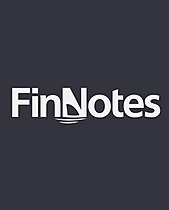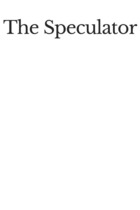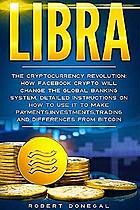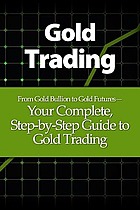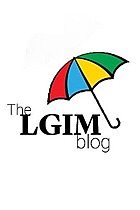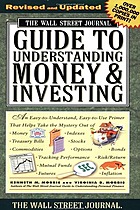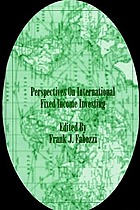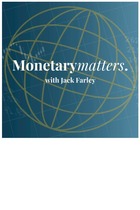
Currency
Currency is the primary medium of exchange issued by a government and circulated within its jurisdiction. Currency is money in the form of paper and coins issued by a government and generally accepted as its face value as a method of payment. It acts as an intermediary and is necessary to perform as a common denominator. The value of any currency fluctuates constantly in relation to other currencies. The most common way to measure currency value is by measuring its convertibility to other currencies, also known as the exchange rate. In the 21st century, a new form of currency has entered the vocabulary and realm of exchange: virtual currency, also known as cryptocurrency.
Experts - People
Adam Golden
Adam Grimes
Adam Kobeissi
Adam O'Dell
Alex Gurevich
Amelia Bourdeau
Andrew Law
Andy Schectman
Anton LeRoy
Ashok Bhatia
Ashraf Laidi
Asoka Woehrmann
Axel Merk
Benoit Bosc
Bill Blain
Bill Lipschutz
Bill Strazzullo
Blake Morrow
Bob Elliott
Bob Iaccino
Bob Savage
Bob Treue
Bobby Schwartz
Boris Schlossberg
Brent Donnelly
Brent Johnson
Brian Kelly
Brian Werdesheim
Bruce Kovner
Bud King
Carley Garner
Carlos Asilis
Catherine Coley
Chase Taylor
Chris Giancarlo
Chris Vermeulen
Chris Weston
Christophe Ollari
Colm O'Shea
Dave Matias
David Woo
Dominic Frisby
Doug Noland
Douglas Borthwick
Ellen Safir
Eric Peters
Eric Wallerstein
Erik Conley
Francesca Taylor
Francis Hunt
Frank Giustra
Frank Holmes
Gareth Soloway
Geo Chen
George Saravelos
Giovanni Pozzi
Graham Summers
Greg Diamond
Greg Weldon
Grega Horvat
Guillaume Fonkenell
Ian Bezek
Ian Sims
Jake Weber
James Aitken
James Helliwell
James Turk
Jamie Coutts
Jamshed Engineer
Jan Vlietstra
Jarrod Wilcox
Jeff Berwick
Jeffrey Hirsch
Jens Nordvig
Jeremy Schwartz
Jesse Powell
Jim Leitner
Jim Martens
Joe Perry
John Butler
John Floyd
John Kosar
John Murphy
John Nance
John Netto
John Taylor
Jonas Thulin
Joseph Trevisani
Julian Brigden
Kathy Lien
Keith Dicker
Kevin Smith
Konstantin Boehmer
Lars Seier Christensen
Lawrence Lewitinn
Lex van Dam
Louis Bacon
Lyn Alden
Mahmood Noorani
Maleeha Bengali
Marc Chaikin
Marc Chandler
Marc Ostwald
Marcin Liberadzki
Mark Newton
Mark Whitmore
Marvin Barth
Meb Faber
Michael Covel
Michael Kao
Michael Petley
Moe Zulfiqar
Moorad Choudhry
Murray Gunn
Nancy Zimmerman
Neil Azous
Niels Kaastrup-Larsen
Nigam Arora
Ole Hansen
Oliver Harvey
Olivier Desbarres
Osman Ozsan
Patricia Hemsworth
Paul Johnson Jr.
Paul McNamara
Paul Tudor Jones
Peter Goodburn
Petr Pinkhasov
Philippe Khuong-Huu
Raghee Horner
Ray Dalio
Ray Merriman
Rich Ross
Rob Davis
Robert Gibbins
Roger Montgomery
Rohan Grey
Said Haidar
Sebastien Page
Seth Bernstein
Simon Potter
Stephen Bigalow
Steve Hanke
Steve Miley
Steven Goldstein
Steven Mnuchin
Steven Schoenfeld
Sudhu Arumugam
Taimur Baig
Tariq Dennison
Thomas Hutson-Wiley
Todd Edgar
Tom Busby
Tom Denham
Tom Gentile
Tony Carrion
Tony Mackenzie
Tony Zhang
Trevor Neil
Udayan Mitra
Vincent Deluard
Vishal Mehta
Yoni Assia
ABOUT CURRENCY
A currency is a unit of exchange that is used to facilitate transactions between countries and regions.
Currency can exist in both physical and digital forms, with physical currency, including coins and banknotes, while digital currency may be represented electronically in bank accounts and payment systems.
Before the concept of currency was introduced, goods and services were exchanged for other goods and services under the barter system.
Money and currency are interrelated but different terms. Currency is one form of money.
Money represents the value of goods and services, whereas currency is the medium used to exchange that value.
Often issued by a government, it is one type of payment that people can use within a jurisdiction. Money, however, refers more broadly to a system of perceived value which allows for the exchange of goods and services.
FACTORS AFFECTING CURRENCY
Interest Rates.
Currencies of countries offering higher interest rates tend to increase in value, all else being equal. This is because fixed-income investors flock to higher interest rates, which increases the currency’s demand and value.
Economic Health.
The overall health of an economy can influence the demand for a currency, which can have an impact on its value. Some economic indicators that traders monitor are GDP growth, inflation rates, and employment figures.
Capital Flow.
Capital flow represents a large portion of the demand for currency. Large amounts of capital inflow going into a country appreciate the currency, while capital outflow depreciates the currency.
Money supply refers to the money within a country at a given point in time. The higher the money supply, the lower the currency value and vice versa.
Market Sentiment.
As the forex market is decentralised with no single entity controlling it, the value of currencies is driven by supply and demand. The overall mood and sentiment of the market can therefore impact currency value.







































